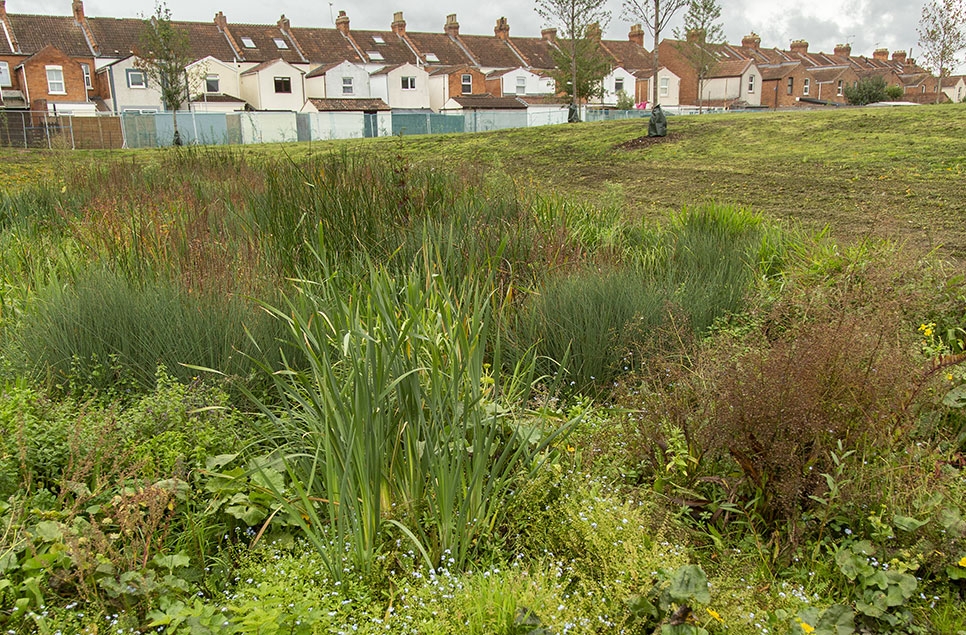Could urban areas be about to get wetter? Natural England’s new Green Infrastructure Standards
We know that putting wetlands in urban areas brings a whole host of benefits to communities from increased wellbeing, to resilience to flooding and heatwaves. This and other natural features that deliver benefits for people and nature are often called “green infrastructure”. This essentially means all the bits of green and blue dotted across the places where we live and work that help communities thrive.

The Government recognised the value of green infrastructure when they put an action in their 25 Year Environment Plan to review and update standards for green infrastructure. It was hoped these standards would guide local planning authorities, developers, and communities on how to make the most of existing and new natural spaces.
Natural England were tasked with putting together these standards and WWT helped as part of the Advisory Group, with the aim of making sure they had wetlands at their core. At the end of January Natural England published the main elements of the standards: the Headline Green Infrastructure Standards and the Design Guide. These are chock full of great advice on using nature to help us live better, but how good are they for encouraging use of urban wetlands specifically?
The Headline Standards’ most important recommendation is that all homes should have access to a variety of good quality green and blue spaces close to home. Most importantly, everyone should have a small green or blue space and a medium sized green or blue space within 15 minutes of home. If this target were met, alongside the separate quality and nature restoration standards which guide what these green and blue spaces should look like, we would all have a lot more nature to enjoy in our towns and cities.
Crucially, the Design Guide makes clear that if benefits from these natural spaces are to be maximised, they should include wetlands wherever possible. The Design Guide describes a whole range of ways wetlands can be incorporated into urban areas, whether that be as lakes and ponds in our parks, restored streams flowing through towns, or mini-wetland rain gardens on our streets. The Design Guide also shows local authorities and developers how to maximise the full range of benefits, such as flood risk reduction and improved water quality, from wetlands.
Overall then, they provide strong encouragement for local authorities and developers to incorporate more wetlands into new developments and local planning policies and guidance, which should mean more of the wetland wildlife we know and love!
But there are a couple of things missing. As yet, there’s no specific standard for the amount of blue space urban areas should have. This is something we’d like to see and we hope will be added in future. The standards are also just voluntary for now. Despite a new target from the Government in their Environmental Improvement Plan (the key document for environmental policy) that everyone should live within 15 minutes’ walk of a green or blue space there’s no mechanism to enforce these standards. This is something we hope to see put into legislation through the Levelling Up and Regeneration Bill.
There’s still some work to be done then to make the most of this powerful new guidance. Nonetheless, it’s great that local authorities and developers now have clear guidance on why and how wetlands can be a major part of our urban landscape. Our work as part of the advisory group played a part in making that happen and we’ll continue advocating for policies that drive urban wetland creation.



